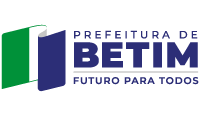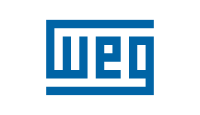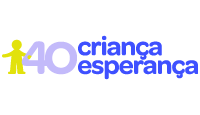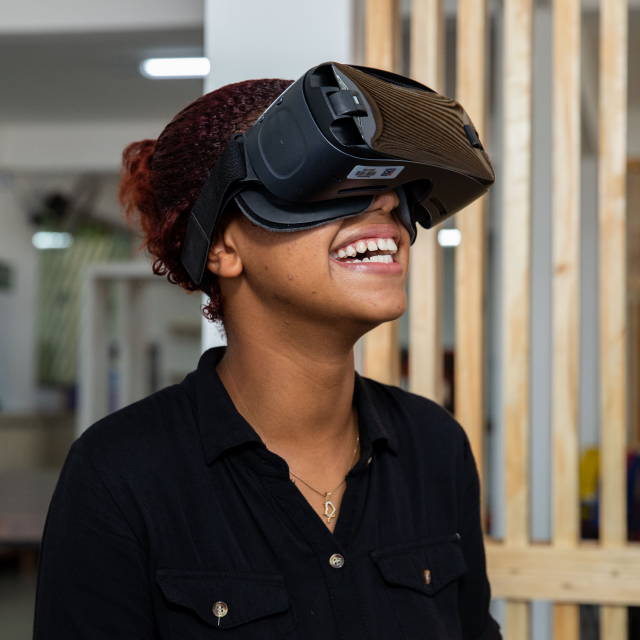

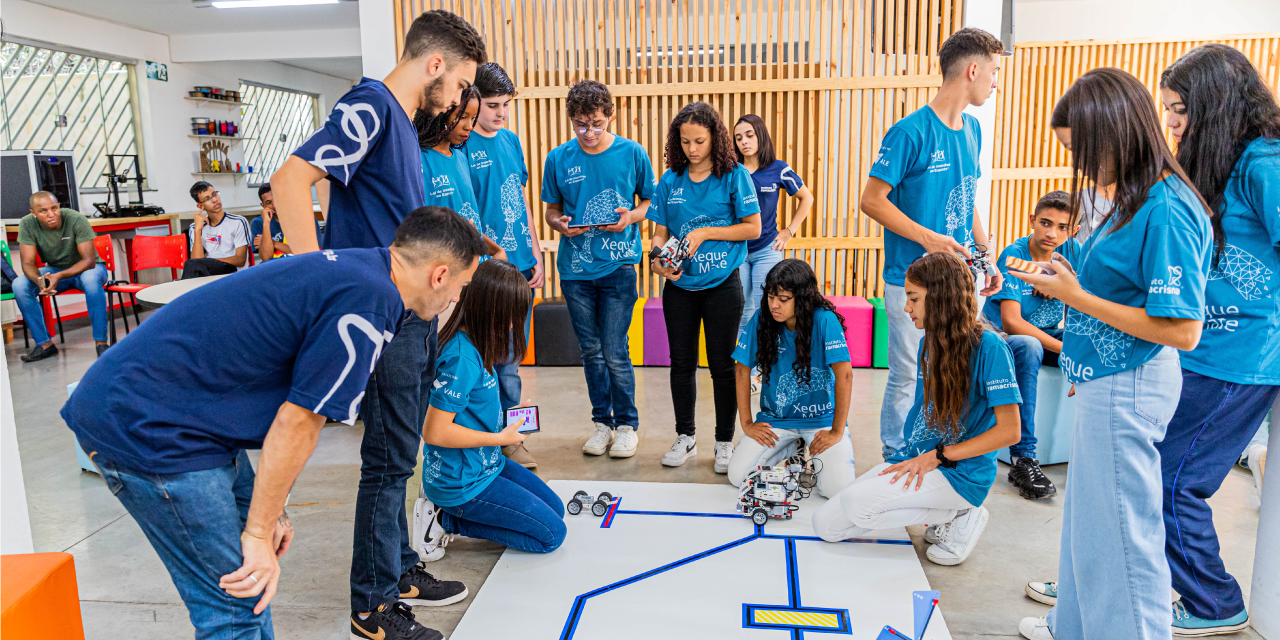
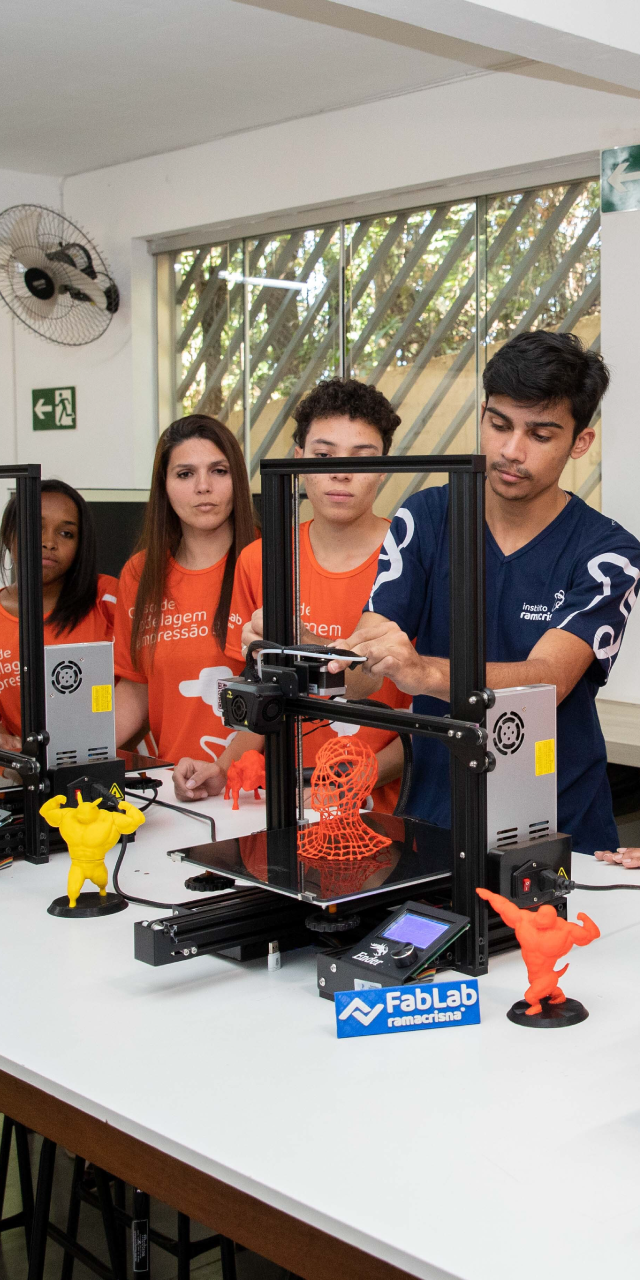
O FabLab (Fabrication Laboratory) é um laboratório de inovação criado para estimular a criatividade e o conhecimento por meio da prática, transformando ideias em realidade. Seu objetivo é promover a qualificação profissional de jovens e adultos e a inclusão digital de crianças e adolescentes, alunos do ensino fundamental de escolas públicas, por meio do aprendizado de robótica, programação e conhecimentos básicos e intermediários em tecnologia. Com isso, a Ramacrisna quer levar inclusão, inovação e tecnologia de ponta para além das fronteiras regionais, sociais e econômicas.
O FabLab Ramacrisna conta com uma área de 500m² e oferecerá o que há de mais moderno e avançado em tecnologia, com ferramentas e materiais para a produção rápida de objetos por meio de prototipagem. O espaço conta com 6 impressoras 3D, 5 óculos de realidade virtual, uma CNC Laser Cut Router, 18 tablets, computadores e 8 kits lego para a prática de Robótica Educacional. Esses equipamentos possibilitarão a abertura de novos cursos profissionalizantes, totalmente gratuitos e com alta demanda no mercado.
Com esta capacitação tecnológica em fabricação digital, programação e eletrônica, os beneficiários do projeto poderão prestar serviços ou criar seus próprios negócios. Eles terão diversas possibilidades de trabalhar com impressão 3D, produção e preparação de materiais produzidos em CNC Laser Cut Router, corte/gravação de arquivo digital, software, processos de fabricação digital, prática e projetos a laser usando Sistema CAD.




A combinação perfeita entre tecnologia e programação coloca a robótica no centro quando se trata de preparar crianças e adolescentes para a vida.
Inventar, programar, montar e movimentar um pequeno robô são atividades que aprimoram o raciocínio lógico, proporcionam trabalho colaborativo e promovem a competência interdisciplinar, entre outros ganhos pedagógicos.
Mas vai muito além disso. Ao se divertirem com kits programáveis, softwares, protoboards, fios, sensores, placas e motores, os estudantes começam a mudar seu futuro, mesmo sem perceber. Ao se interessarem por programação, eles preparam o terreno para sua futura inserção no mercado de trabalho, que tem uma demanda cada vez maior por tais habilidades.
O uso de programas como Power Point, Word, Excel, Paintbrush, Publisher, etc., possibilita ampliar a capacidade inventiva e recreativa de crianças e adolescentes. Softwares educacionais e de pesquisa são utilizados para enriquecer os conteúdos e processos de ensino. O videogame como ferramenta de aprendizagem foi adotado, pois os jogos apresentam uma série de desafios ao praticante que, a todo momento, é desafiado a avaliar, organizar, priorizar informações e, a partir delas, tomar decisões estratégicas a curto e longo prazo.
O propósito da realidade virtual é simular uma realidade que não existe. Essa tecnologia permite que os alunos interajam com objetos e cenários tridimensionais. Por exemplo, o professor pode usar o tablet para guiar os alunos para áreas inóspitas do mundo real (nadar com tubarões, visitar o espaço) ou transformar a sala de aula em um museu, sem sair de sua localização real. Em tal experiência, os alunos se tornam capazes de desempenhar o papel principal e, consequentemente, aprimorar seu processo de aprendizagem de uma forma que pareça mais intensa e próxima da realidade.
A impressora 3D promove atividades que incentivam a colaboração, a criatividade e o compartilhamento. Para usar essa tecnologia, os alunos criam seu modelo no aplicativo Paint3D (Sistema Operacional Windows) e usam o software Simplify3D para traduzir seus modelos 3D em instruções que a Impressora 3D pode entender.
